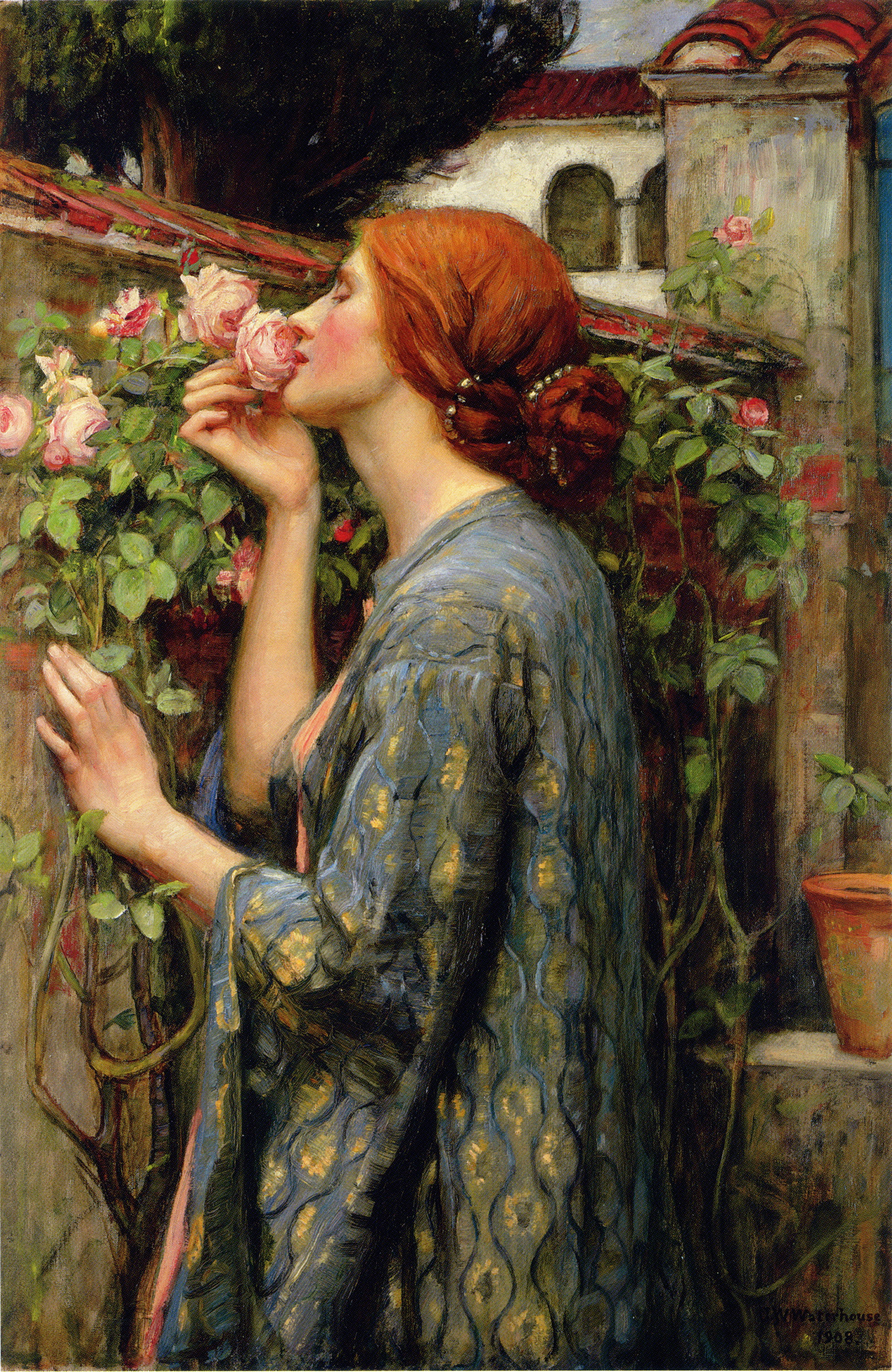Unlike a large portion of Waterhouse's other work, The Soul of the Rose is not a scene taken from a famous or ancient tale of love. Instead it is a study of a woman in a garden and thought to be based on the work of Alfred Lord Tennyson. The Soul of the Rose was painted when Waterhouse was in his creative maturity: an artist established with patrons and public alike, who pursued his unique vision whilst adapting to modern precepts regarding style. Archetypally romantic, it is nevertheless executed with fluidity and verve. It leaves the crystalline imagery of the past century behind. Waterhouse often incorporated a great sense of sensuality in his women, whether in the form of naked flesh or simply a delicate look. Restrained sexuality and longing for an invisible love are key themes in The Soul of the Rose. Waterhouse portrays the woman in the picture without any obvious sexuality, but her position against the wall and her delicate hand give the piece subtle sensual undertones. Many of Waterhouse's women are trapped or imprisoned, and he seems fascinated by the idea of a woman who is powerful yet restrained. This may have been what he observed with women with high public profiles during his lifetime. The Soul of the Rose is no exception to this theme; even though the woman is shown against a brick wall, she finds pleasure through nature and her thoughts of a love that was.




The Soul of the Rose
oil on canvas • 88.3 x 59.1 cm
 John William Waterhouse
John William Waterhouse